Cheapest 🎉 Hiking Clothing Quechua SH500 U-Warm, Waterproof High Hiking 🥾 Boots, 👩 Women’s 🛒
$119.00 Original price was: $119.00.$90.44Current price is: $90.44.
- Experience the Best Quality
- The quality you expect, the service you deserve.
- The best quality products, always.
- Safe Transactions, Happy Customers

Time to embrace snowy outdoors!
These waterproof leather hiking boots will keep you warm in temperatures as low as -2°F. Their grip on the snow means you can focus on making the most of your outings.
Are you dying to get away from the beaten path?
The hi-top leather upper means you can forge a path in comfort & style, while waterproofing keeps your feet dry.
Can you be sure that your boots are warm enough for your winter hikes?
We chose an ultra warm lining and a wide volume that promotes insulation and gives you effective protection from the cold.
We have tested it in the laboratory and in the field with our user representatives. We checked the temperature up to which it stays comfortable when you’re stationary and when you’re walking, as this varies a lot: 23°F when static and -2°F when moving. And we took into account how temperature is felt differently by men and women.
How do your boots protect you from outdoor conditions?
Your boots have been designed with a membrane to make them waterproof and breathable. A membrane is a very fine component (5 to 25 micrometers) affixed to the inside of a fabric that prevents water from entering while allowing moisture to escape. Their high upper with an elastic gaiter provides good protection against the cold and prevents snow from entering, while the midsole gives you perfect insulation. Your feet will be well protected, warm, and dry.
How can you be sure that your boots are 100% waterproof?
We made sure that your boots are waterproof by conducting laboratory tests to simulate walking with the boots half submerged in water. We also conducted field tests to measure wear and aging. During the waterproofing test, we test 3 levels of waterproofing: 2000 flexes (about 2.5-mile hike), 4000 flexes (about 5-mile hike), and 8000 flexes (about 10-mile hike). This model of boot has been tested with up to 4000 flexes, which is equivalent to 5 miles of walking.
Breathable boots for optimal thermal comfort
Thermal comfort is a balance between the warmth of the boots and its ability to allow the foot to breathe. Too much heat or not enough breathability, damp accumulates and cold can set in. We have designed your boots with your activity in mind, regular and sometimes intense, with a membrane whose role is to prevent water from entering on one side while allowing moisture to escape on the other.
What is the difference between traction and snorkeling?
The traction of the boots depends on the number and shape of the studs. The grip is dependent on the materials of the sole and the tread pattern, like the tires of your car. Traction optimizes propulsion, prevents the boot from slipping backward when going uphill, and stabilizes the boot.
Grip prevents the boot from slipping and skidding on smooth ground or in demanding conditions (rain, snow, ice) by giving grip to the sole.
What type of grip and traction does this boot provide?
Your boots, which are equipped with SNOWCONTACT soles, have been designed for maximum comfort in terms of traction for hiking and grip on snow. The pattern and height of the studs (5 mm) are based on a lynx’s paw and are strategically placed for optimum traction when hiking in snow and a hilly terrain. The surface and the tread pattern of the studs are designed to conform perfectly to hard snow surfaces and eliminate any excess water so that you do not slip.
What is the purpose of the SNOWCONTACT technology on the soles of your boots?
The SNOWCONTACT soles are made with a specific component and stud pattern that is designed to ensure the best possible grip and traction. SNOWCONTACT soles are more effective than traditional soles on snow. When walking on ice, the only way to ensure optimum safety is to add anti-slip grips to your boots.
Why is it important to be supported in a hiking boot?
The support provided by your boot is essential for your comfort when walking. Indeed, good support optimizes your steps on hilly terrain (ascent and descent), prevents your foot from sliding in the boot and reduces the occurrence of blisters. There is less loss in the transmission of your energy to the boot and therefore less fatigue. This is especially important when you are snowshoeing.
Will your boots withstand regular use over the long term?
Our engineers conduct laboratory tests to ensure that the product fully complies with your satisfaction in use. Our verifications include the following elements: tearing eyelets and straps, gluing, toxicology, UV-resistance, abrasion-resistance of outsole and upper components, accelerated aging.
Why choose a leather snow hiking boot?
Leather is ultra comfortable, durable (natural material), and flexible for greater comfort.
This material is waterproof and naturally breathable.
Warm in winter and cool in mid-season, the leather naturally regulates the temperature of the boot.
We advise you to brush your boots well (soft brush) to maintain them and optimize their longevity.
How to choose the right footwear for snow hiking
To be well equipped in winter, we recommend that you follow these principles:
Warmth: warmth provided by a warm pair of socks (ideally containing a suitable percentage of wool)
Breathability: Choose the sock according to the intensity of the hike and make sure you get a breathable model to minimize moisture.
Boot height: adjust the height of the sock to the height of the boot and preferably choose high models if want more protection.
How should you preserve the technical qualities of your boots?
A fabric’s water-repellent property is its capacity to make water run off its surface without seeping in. This prevents the fabric from soaking up water and keeps it lightweight, warm, and breathable. The water-repellent property is achieved by treating the fabric’s exterior. This treatment needs to be renewed during the lifetime of the garment. Products (spray or liquid) designed specifically for this purpose are available in our stores.
How does my product warranty work?
This product is guaranteed for 2 years from the date shown on the sales receipt. A product covered by the warranty will be repaired or exchanged free of charge. The warranty covers product defects, excluding those resulting from normal wear and tear and improper use.
A score for comparing products’ environmental impact
The environmental impact of the product is calculated based on its entire lifecycle and using different indicators. A score from A to E is given to help you easily identify the most eco-friendly products by comparing products of a similar type. Decathlon is committed to this approach. Check out our efforts in the area of sustainable development: http://developpement-durable.decathlon.com/
Composition
Upper of : 40.0% Cowhide leather, Upper of : 20.0% Polyamide, Upper of : 20.0% Polyester cationic, Upper of : 10.0% Polyurethane, Upper of : 10.0% Thermoplastic polyurethane
Outer sole of : 70.0% Polyurethane, Outer sole of : 30.0% Rubber – Synthetic
Lining and sock of : 60.0% Polyamide, Lining and sock of : 40.0% Polyester cationic
Warm lining : 60.0% Polyamide, Warm lining : 40.0% Polyester cationic
Warmth : Comfort temperature – when stationary: 23°F.
when moving: -2°F.
Waterproof : Waterproof and breathable membrane for keeping your feet dry.
Grip : Grip with SNOWCONTACT technology: materials and tread pattern of the soles.
Traction : The location and depth of the 5 mm studs provide traction on snow.
Fit : Hi-top leather upper & lacing with 6 hooks offering good adjustment and support.
Snow reduction : Adjustable fur ankle support with lacing to prevent snow from entering.
| Color | Carbon Gray |
|---|---|
| Size | 5.5, 6.5, 7.5, 8, 9, 9.5, 10.5 |
Be the first to review “Cheapest 🎉 Hiking Clothing Quechua SH500 U-Warm, Waterproof High Hiking 🥾 Boots, 👩 Women’s 🛒” Cancel reply
Related products
Hiking Clothing
Discount ❤️ Hiking Clothing Quechua SH100 U-Warm, Waterproof High Snow 🥾 Boots, Men’s ⌛
Hiking Clothing
Outlet 🤩 Hiking Clothing Forclaz Trek 100 23°F Down Packable Puffer 🎒 Backpacking Jacket 🥰
Hiking Clothing
Camp Furniture

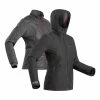
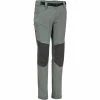




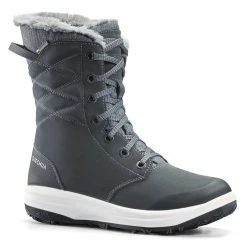







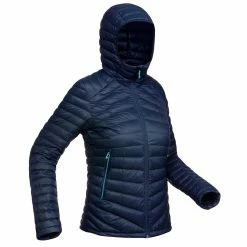
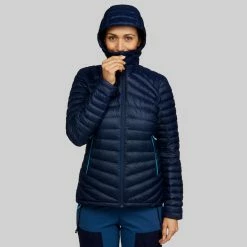









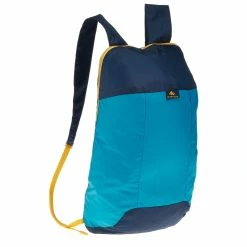
Reviews
There are no reviews yet.